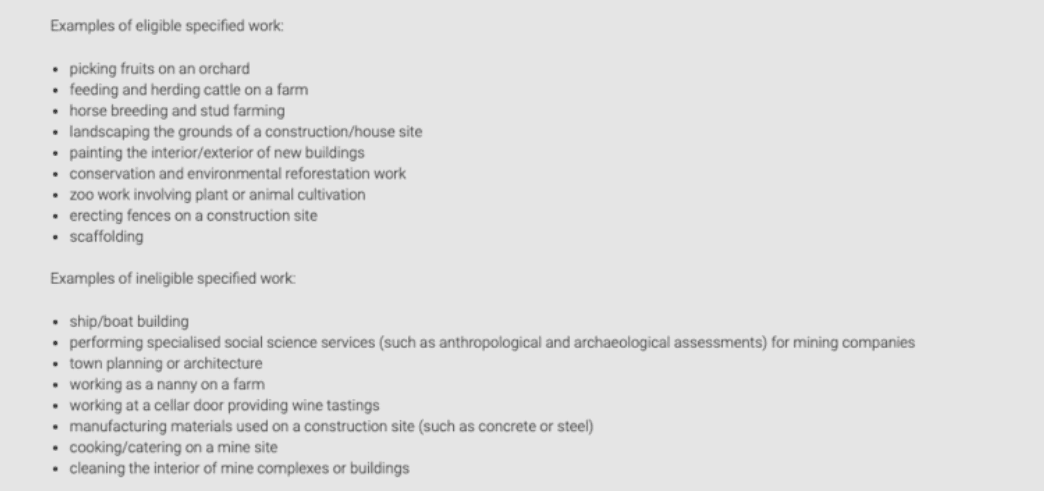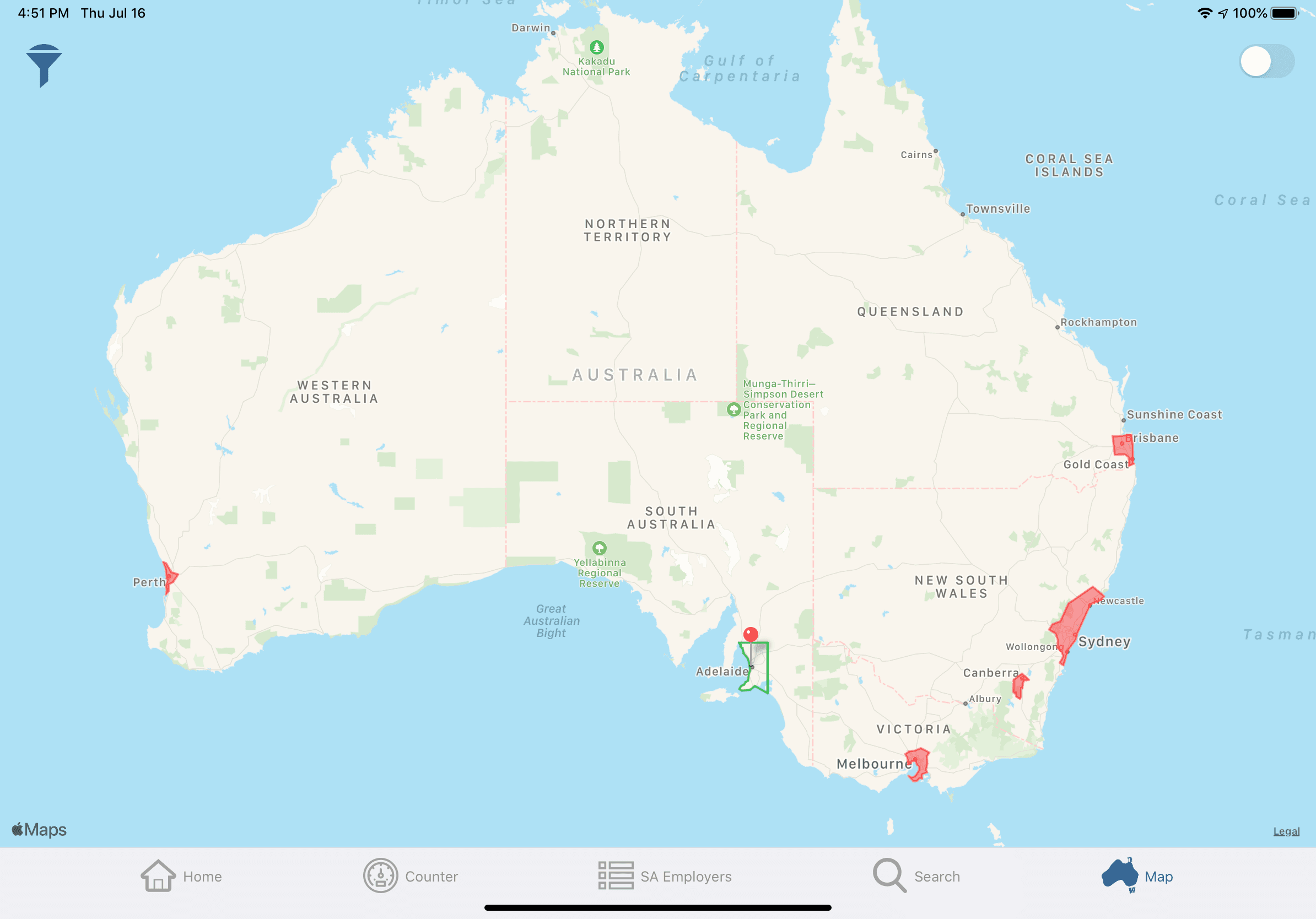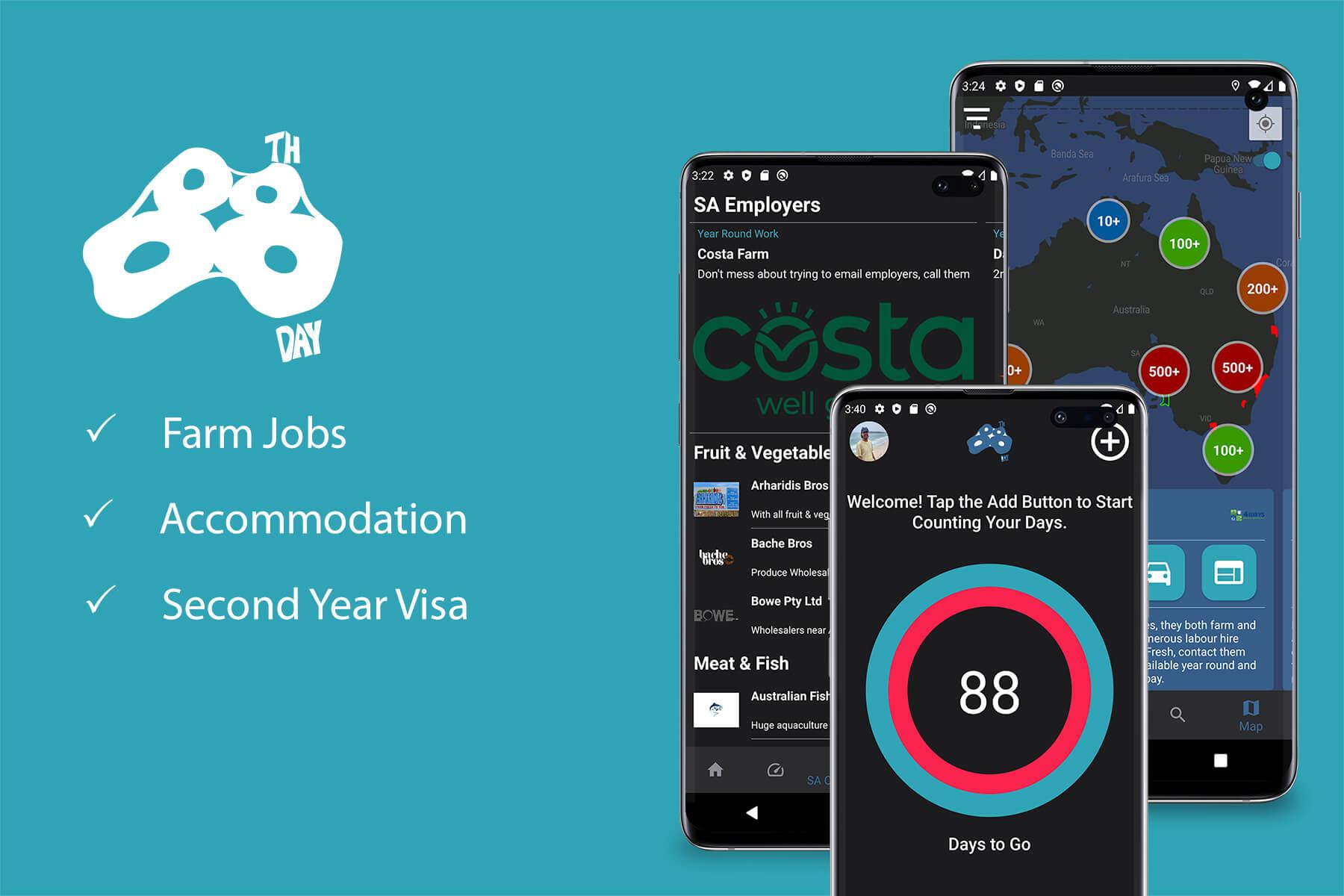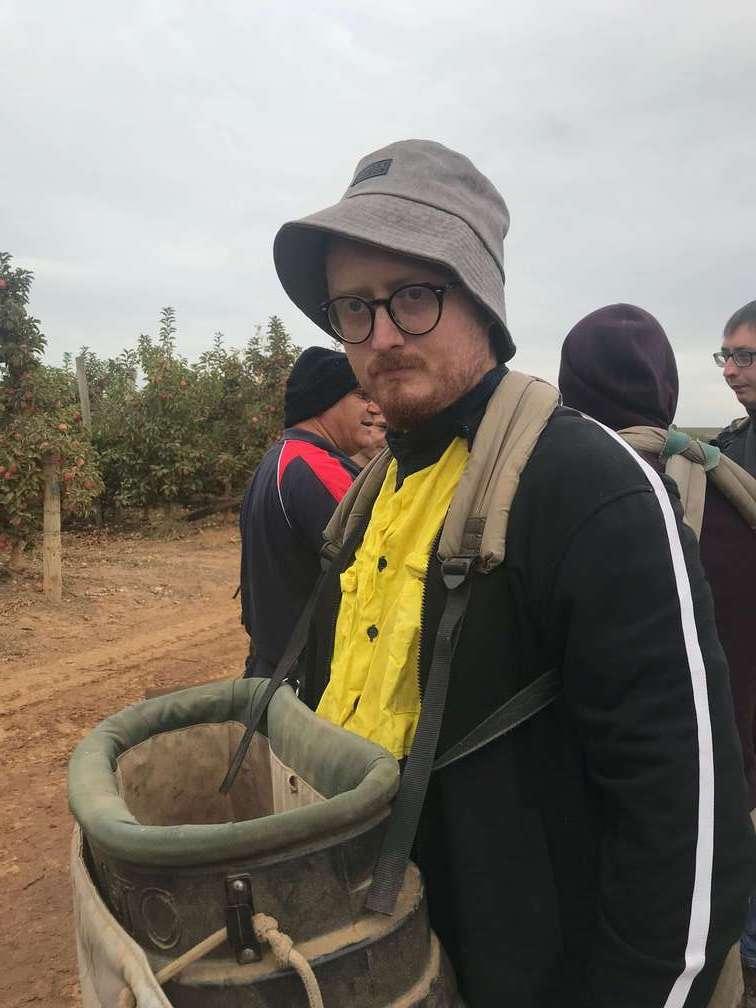The 88 Day Journey: Farm Work and Beyond in Australia
After spending our first week at Hostel 109, Trevor the owner helped us organise ourselves and pointed us in the right direction. We jumped in our Honda CRV Sport and set course for McLaren Vale, our first experience of farm work would be grape picking and it was far from ideal. This is what we wish we knew then about farm work in Australia and the broader world of specified work.
While commonly referred to as 'farm work', the Australian government's specified work requirement for visa extension includes a diverse array of industries. This broadened definition opens up numerous opportunities for Working Holiday Visa holders. Let's break down what actually counts as specified work in Australia:
Eligible Industries for Specified Work in Australia
- Agriculture, Forestry and Fishing
- Mining
- Construction
- Tourism and Hospitality (in Northern Australia only)
- Bush Fire Recovery Work
- Disaster Recovery Work
- Critical COVID-19 Work in the Healthcare and Medical Sectors
This diverse list demonstrates that 'farm work' is just one part of the specified work landscape in Australia. Whether you're more suited to outdoor physical labor or prefer indoor roles, there are options to suit various skills and preferences.

What Counts as Specified Work?
Now there is a theme to these examples: primary work involving plant or animal cultivation is clearly eligible, however just working in this industry is not enough. Being a nanny on a farm isn't enough, nor is providing wine tastings in a cellar door. Effectively, the work must be related to the primary activities of the industry you are in. Administrative roles will not count, nor will doing the books for a mining company.
The Reality of Assessment
All that being said, we don't necessarily believe this is how things always work out when Immigration is assessing your application. The primary evidence Immigration uses is your payslips. Unless the payslip actually asserts that you work in a non-eligible role, it's our belief they will grant your application.
This is especially true for smaller businesses where you may be taking on multiple roles. Speak to your employer and make sure the job title on the payslip is the one you need. Many employers don't even specify a role on your payslip. If this is the case and you are working for a business with an eligible ABN, then we believe Immigration will grant your visa no matter what you were actually doing.
Always communicate with your employer about your visa requirements and ensure your payslips accurately reflect your primary role.

When it comes to farm work and specified work in Australia, it's crucial to understand that there are now two distinct classifications: rural areas, and remote and very remote areas. This distinction has expanded the opportunities for Working Holiday Visa holders.
Rural Areas
The red zones on the map are ineligible and regarded as urban. As you can see, these urban areas are fairly small compared to the vast expanse of Australia. Tasmania, just at the bottom of this picture, is entirely classified as rural.
In simple terms:
- NSW: Sydney, Newcastle, Wollongong, and The Central Coast are ineligible.
- ACT: The entire territory is ineligible.
- Queensland: Brisbane and Gold Coast are ineligible.
- Victoria: The urban area surrounding Melbourne is ineligible.
- Western Australia: The urban area surrounding Perth is ineligible.
As a general rule, if you drive for about an hour outside these major cities, you're likely to be in an eligible rural area.
Remote and Very Remote Areas
In addition to rural areas, the Australian government has designated certain regions as "remote" or "very remote". These classifications open up even more opportunities for specified work, including some that weren't previously eligible.
A prime example of this is hospitality work on Hamilton Island. While hospitality work isn't typically considered eligible for visa extension purposes in most parts of Australia, it does count when performed in designated remote or very remote areas like Hamilton Island.
Finding Eligible Areas
This map is a screenshot taken from The 88th Day app, available on iOS and Android. For a comprehensive list of eligible postcodes, including those for remote and very remote areas, visit the official immigration website.
Remember, the classification of an area can significantly impact your work options and visa extension eligibility. Always verify the status of your intended work location before committing to a job.
One of the greatest enigmas—and a frequent topic of speculation—when completing your 88 days of farm work in Australia is determining precisely how many of those days will be officially counted. In rural Australia, rumors about a 35-hour cutoff circulate widely as backpackers strive to reach the elusive goal of a 7-day workweek.
Here at The 88th Day, we're in the unique position of having direct communication with Immigration, and we have some valuable insights to share with Australia's working holiday visa holders.
The Maria Case: A Key to Understanding
The number of days you can count in a week depends on how closely your work hours align with those expected of a full-time employee. Immigration authorities often refer to the Awards system of each industry to determine what constitutes full-time work. However, not all Awards specify an exact number of hours; some only set a maximum limit.

Take Maria's situation as an example: She works at a dairy farm, which falls under the Pastoral Award. This Award defines a full-time worker as someone who averages 38 hours a week. In Maria's case, she works only 30 hours, yet according to Immigration, she is counted as working seven days a week. This suggests that unless an Award explicitly states a minimum number of hours required for full-time employment, the target appears to be 30 hours.
Our Understanding of Day Counting
Based on our research and communication with Immigration, we believe the day counting structure looks like this:
- 6 hours =< weekly hours < 12 hours = 1 day
- 12 hours =< weekly hours < 18 hours = 2 days
- 18 hours =< weekly hours < 24 hours = 3 days
- 24 hours =< weekly hours < 30 hours = 4 days
- 30 hours =< weekly hours = 7 days
However, it's important to note that this is not official information, but rather our interpretation based on available data and communication with Immigration.
Piece-Rate Agreements
For those working under piece-rate agreements, the situation can be less clear. According to information we've received, "Provided the working holiday maker is on a valid piecework agreement, and submits a copy with their visa application, then any day on which they have worked and been paid will be counted as a day."
The 88th Day Calculator App
To help you keep track of your work days, we've developed The 88th Day app. It calculates your days based on the hours you input and provides a precise figure of how many days you have remaining.

Download The 88th Day app for iOS and Android.
Remember, while we strive to provide accurate information, the final decision always rests with the Department of Home Affairs. If you're unsure about your eligibility or have specific questions, it's best to contact them directly or seek advice from a registered migration agent.
How Certain Are We?
This is not an exact science, the regulation is deliberately unclear, the Government of Australia has introduced this programme for one reason and it states it here in the 2017 Ombudsman Report into the Working Holiday Visa.

“The 417 visa has introduced an uncapped labour source into the Australian market that fills a low-skill labour gap in the domestic workforce, particularly the specified work requirement of the 417 visa program which fills the labour shortage associated with food production in regional and rural areas”.
The reason we are all doing this specified work is because the government couldn’t get Australians to do this particular type of work, as long as the work is done and the government get their visa fees they don’t really care too much about the specifics of individual cases. Many visa applications are automatically accepted and even when investigations take place, normally only a sample of evidence is asked for.
My final advice to you is this, do as many hours per week as you can, but don’t get overly hung up if you’re not always getting 30 hours a week. If time runs out and our calculator [iOS & Android] says you haven’t quite got the 88 days yet, do not worry. We think as long as you have 13 payslips, the likelihood is your application will still be granted.
Finally if all this is making you feel extra nervous about getting your days, sign up to our service and we will make sure you get a good hourly job with reliable hours.
Correspondence with Immigration
Below we have quoted information we have received from Gale Lalor, Acting Assistant Secretary, Immigration and Citizen Services Group. To sum up what she is saying, effectively if your employer believes you are working full time for them, then there is no minimum hours for a full day.
“To meet the three months specified work requirement, applicants must work for the same number of days that a full-time employee in that job would normally work in a three month (88 calendar day) period. Note that the work does not have to be full time, or be performed in a continuous period.
All WHV workers, not just those working full time, can count rest days as part of the 88 calendar days. Put simply, in most circumstances, applicants can include two notional rest days in the 88 calendar days for every five days worked.
The department recognises that there is a range of circumstances affecting what constitutes a normal full day in each eligible industry, especially in the agricultural industries. For this reason, the policy does not prescribe the minimum hours for a normal or ‘full’ day.
As a general guide, if the employer reasonably considers that an applicant has completed a normal full day of work for that industry, then the departmental decision maker may be generally be satisfied to count that day of work toward the three months requirement. Note that in relation to piecework, special provisions apply. Provided the working holiday maker is on a valid piecework agreement, and submits a copy with their visa application, then any day on which they have worked and been paid will be counted as a day.”






